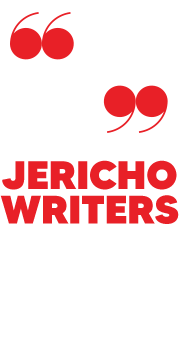Ever wondered what makes a great villain? Well, guest author C M Taylor has given you all you need to build your own bad guy in this blog post.
In this blog, C M Taylor takes inspiration from some of the greatest fictional villains of all time to help you create a villain of your own – a dazzling and multi-dimensional bad guy.
What Is A Villain?
The term ‘villain’ defines a character who personifies the forces which thwart the progress of the main character. Now, while it is feasible that the villain is the main character – and we will come on to that less usual and more nuanced situation later on – in the vast majority of cases, the villain is villainous in relation to opposing the needs and desires of the main character.
This structural role of antagonising the main character is the reason the villain is often described as the antagonist. They are a character who stands in negative relation to the spiritual, emotional, moral or financial progress of the main character, a character who is often described as the protagonist.
How To Write A Memorable Villain:
- Let your theme influence their traits
- Use their backstory to show why they’re like this
- Humanise your villain. Show why they became corrupted
- Memorable injuries are clichés. Avoid
- To compete with the protagonist, your villain also needs to be special
- Your villain should feel unbeatable, at least for a while
Why Do Villains Matter To Fiction?
Answering this involves taking this question right back to ask ourselves: what is a story?
The crux of a story is concerned with how the main character changes, or fails to change, over time, in contact with internal, external and relationship pressures. A story is a map of this change over time, or this failure to change over time.
The change is both an internal, emotional journey and an external, physical journey. Now if the journey comes easily, then there will be no drama, because drama requires struggle. The journey which the protagonist goes on needs to be ripe with struggle – with obstacles, tests, high stakes.
The most common and identifiable way to manifest struggle is to have it between people. Between the antagonist (or villain) and the protagonist (or heroic character). It is the antagonist who provides the obstacles standing in the way of the protagonist’s need to consummate their change.
It is the test of wills between the antagonist and the protagonist that generates the struggle.
On a very simple level, in terms of the mechanics of plot, it is the villain who sets the test and the heroic character who sits the test. It is the villain whose actions provoke the need for the hero to act. Batman without The Joker would have no need to act.
The villain is a dark twin to the hero. The villain embodies the shadow qualities of the hero. The villain is what the hero might have been, what the hero might be, should they make the wrong choices, which is what gives rise to the clichéd piece of film dialogue, ‘We are not so different you and I, Mr Bond.’
If the heroic character struggles to embody the positive possibilities in a work of fiction, the villain convincingly embodies the negative aspects.
The villain personifies the specific forces of antagonism which aim to prevent the protagonist from completing their internal and external journey.
Does Every Story Need A Villain?
The short answer to this question is no – in terms of the villain being a physical personification of antagonism, not every story has or needs this. A story needs antagonism, yes, and most usually this antagonism takes the form of a human being standing in opposition to the progress of the heroic character, but it is not necessary to do this.
Antagonism can be generated in other variations than the single, embodied villain. The antagonism might be within the heroic character themselves. It might be a mistaken belief about life which leads them astray or into repeated unhealthy actions; or it might be an addiction.
Note that choosing to centre the antagonistic force internal to the main character influences what type of story you are telling. It would be hard to make this choice and write an action story, for example. The choice to situate the main antagonistic force internally, as an aspect of the heroic character, is more associated with character-led stories – literary or dramatic works, or sometimes the psychological thriller. Whereas the more traditional human villain personification of antagonistic force is more usual within crime or fantasy or action stories.
There are other forms of antagonism too. It might be centred around a group of people. It might be the family that a young person needs to escape to ‘become’ whole.
Or it might be the pain still felt when a parent abandoned a child.
Or it might be a best friend who continually leads the main character into activities which are against their best interests.
Basically, antagonistic forces can be anything as long as they are the main obstacle in the way of the protagonist achieving what they most need. Traditionally this force has been embodied via the personification of a villain, but the villainous function can be performed within a story by other forces.
How To Create A Memorable Villain: A Checklist
Thematically
A writer can usefully begin their creation of a villain via an understanding of theme. Are you writing about loyalty, for example? In which case, your protagonist has issues with loyalty which they must overcome, via the obstacles of the plot, to achieve a healthy, positive attitude to loyalty. Hence the role of the villain is to embody and prosecute a version of loyalty which is negative but tempting, which is corrupt but seductive, which might derail the heroic character’s attempt to achieve a healthy version of the theme.
It is the villain’s job to oppose the progress of the hero, and so, knowing the specific thematic nature of the progress which the hero must make, that necessarily takes you some way to defining the nature of your villain. Your villain must be suitable and specifically adept at preventing the thematic success of your hero, hence must embody a negative version of that theme.
Via Backstory
So, once you have understood your theme and decided which negative version of the theme is embodied by your villain, you next ask yourself why they are like this.
For an example, let’s stick with the theme of loyalty. Your villain might espouse a version of loyalty which states you must have only loyalty to yourself, or loyalty to chaos, or loyalty to crime, or loyalty to the dead. Any unhealthy version of the theme will do.
Let’s pick they have loyalty to chaos and want to bring disorder and anarchy to the whole world. Why are they like this? Their parents were unbelievably controlling and up-tight and rational and crushed the villain with their excessive punctiliousness maybe. Or the villain and their brother were in some youth cadet force which was all about order and discipline and the brother died in an accident born of excessive following of the rules. You see, once you have your thematic relation, you move to explain it via the backstory.
(Want to explore this more? Then check out this article on character motivation.)
Good-Turned-Bad
Our thematically-driven excavation and development of the villain’s backstory allows us to take an emotionally logical approach and explain why the villain is like they are. Continuing with our theme of loyalty, our rule-following cadet was eager and good to start with, tragic events having turned them on to a negative chaotic version of loyalty. Or our young child started off good but was hounded by neurotically rule-bound parents to crave the release of chaos.
If you show the reader that it is emotionally logical for the villain to have passed from a state of health to their current corrupted self as a consequence of events, you humanise the villain. You make the reader think that they themselves might plausibly have reacted the same way in the same circumstances. You give the villain an emotional plausibility and a gravitas. And a decent villain needs gravitas, needs the emotional plausibility and heft to pull the villain into their version of the theme, into their version of reality.
A good villain is like a moral centrifuge. What they pull towards them and put in peril is the hero’s self, their morality, the hero’s version of the theme. Showing it was entirely reasonable for the villain to arrive at the moral place they are in shows that the hero might arrive their too, and so puts a huge amount of jeopardy in play for the hero.
Memorable Injury
The clichéd villain is often physically disfigured, right? There being a suggestion of a relationship between moral and physical disfigurement. I would however caution against this simple equation, quite apart from it perpetuating discrimination against people who are unfortunate enough to be physically disfigured, it has been done to death. Why not mix it up? The hero is trying to overcome prejudice against their physical disfigurement while the gorgeous villain is prone to the ravages of narcissism.
Alarming Gifts
Your protagonist has to be special. In some genres like fantasy or science fiction they can be ‘the one’ level of special. In genres such as crime or thriller they can ‘exceptional human being’ levels of special. In genres such as romance or realism, they can ‘normal person pushed to the edge behaves heroically’ levels of special. And if your protagonist is special well, given that it is the job of the villain to oppose the protagonist, then in order to seem anything like able to compete with the hero, the villain needs to be special too.
The Unbeatable Villain
Every villain needs to seem unbeatable to start with. The obstacles they place in the way of the protagonist must seem insurmountable. If the hero can beat the villain at the beginning, then there are no struggles needed. It is the insurmountable villain that causes the hero to develop and grow.
It may be that your story is a tragic and the hero fails to beat the villain in the end. However it ends, in the beginning there must be no way that the hero – in their current state – can compete.
How To Create A Likeable Villain
As I write above, the villain stands or falls on the plausibility of their world view – the villain is the hero in their own eyes. If you can show why the villain has ventured from the path of moral health to become the creature they are today then you have created the route by which the reader can empathise with the villain. And if they can empathise then – in the current parlance – they can possess relatability.
All the best characters are layered, multidimensional and above all, unique. So, if your bad guy can have some redeeming qualities, or a journey that the reader can connect with, then that could definitely make for an interesting read.
What If Your Protagonist Is A Villain?
Your protagonist can be both hero and villain – look at Dr Jekyll and Mr Hyde. Or your protagonist can be a criminal – look at The Godfather, at Breaking Bad, at The Sopranos, at Crime and Punishment. Or your protagonist can be an anti-hero – look at Mr Robot. They can be any of those things. As long as they are subject to thematically congruent antagonistic forces, the rules are the same.
As long as we know why they are like they are – In The Godfather, Michael Corleone gets pulled back into the family business of murder and extortion through love of his threatened father. Walter White sells meth – initially at least – to protect his ill family in Breaking Bad. Elliot from Mr Robot illegally hacks computers to out greater criminals.
This is a common strategy – outflanking your villains with even greater villains to make your villain comparatively empathetic. Look at Dexter. Yes, he is a serial killer, but he only kills people who are themselves worse than him. He performs bad acts for a comprehensible and relatable reason.

Inspirational Bad Guys: 12 Great Examples
Tricking Othello into murdering his own wife makes Iago a pretty good start to our collection.
Another trickster, in Treasure Island, Long John Silver tricks Jim Hawkins, disguising his own role as leader of the mutiny.
Why do we care for and want the sociopathic murder Tom Ripley to escape throughout Patricia Highsmith’s Mr Ripley novels? Because he feels love and we feel his vulnerability and inadequacy.
And why do we admire Hannibal Lecter in Thomas Harris’ novels? Because he is brilliant and stylish and logical.
Only somebody as prodigiously gifted as Moriarty could aspire to being a villain worthy of Sherlock Holmes special powers.
Anne Wilkes in Stephen King’s Misery turns out to the fan no writer wants.
Xan may seem like the villain in P D James’ The Children of Men but isn’t the broader antagonistic force that of infertility itself.
No mistaking that it’s a shark who is the villain of Peter Benchley’s novel, Jaws.
Isn’t narcissism the antagonistic force in play in Oscar Wilde’s The Picture of Dorian Grey?
Are dinosaurs the antagonistic force of Jurassic Park? Rather I would say it was the human vanity and over-reaching that lead to the recreation of dinosaurs in the first place. Same with Dr Frankenstein – it’s the Dr not the monster who sets the test.
Isn’t the entire Republic of Gilead the antagonist force in The Handmaid’s Tale?
So, there we have it, a foolproof method to build your very own bad guy. Have we missed anything? Anything else you’d like to add? Head on over to the Jericho Townhouse and let us know what you think.
Jericho Writers is a global membership group for writers, providing everything you need to get published. Keep up with our news, membership offers, and updates by signing up to our newsletter. For more writing articles, take a look at our blog page.











